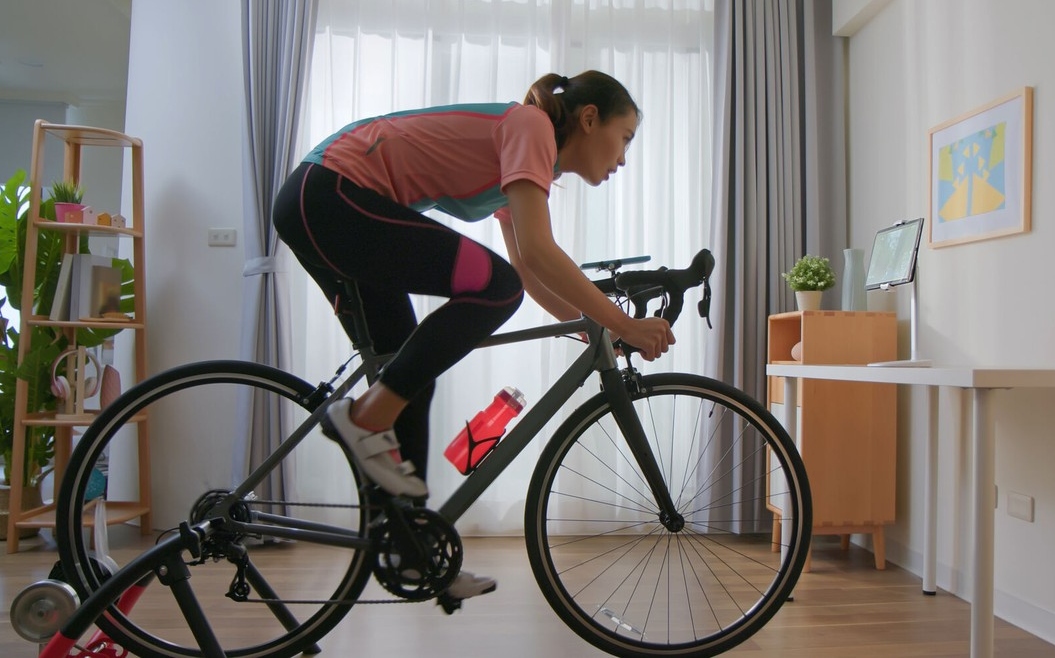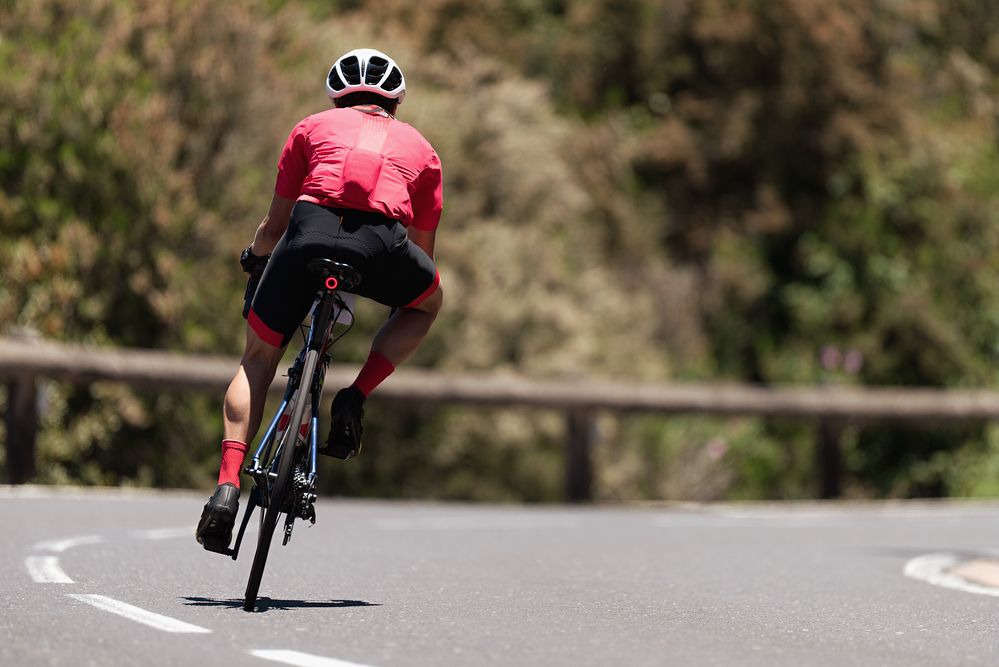Whether indoors or outdoors, you’re still riding a bicycle. You can use the same cycling clothing, your legs are getting a great workout, and you can enjoy a lovely coffee after! But everyone who has tried both knows that there are a few things you simply can’t simulate, not even with a virtual training platform. It’s important to be aware of these differences and adjust accordingly.

You need extra equipment for indoors
Let’s start with the obvious. If you’re going to ride indoors and make use of something like Zwift, you need a smart trainer to mount your bicycle on. Thankfully, these have become much more affordable and capable in the past years. You can check out our guide to the best smart indoor trainers of 2022 in our previous article.
Indoor cycling is more time-efficient
When cycling outdoors, it’s normal to spend between 10% and 15% of your time coasting at 0 watts. This is typically due to downhills, traffic, and other interruptions. There is nothing like this holding you back when indoors. Generally, you should cut your usual training time roughly in half when cycling indoors to get the same training effect as outdoors. This means two things: cycling indoors is more intense but also more time-efficient. You can do your usual 2-hour ride in just 1 hour.
The higher intensity of indoor cycling puts more strain on your legs and your nervous system. It will take some time to adapt to this if you’re new to indoor cycling. To avoid overtraining, do no more than two intense indoor sessions per week.
The 20-watt rule
Research shows that most riders are able to produce more power outdoors than indoors. The differences range from an increase of 11% up to 70% (Mieras, 2014). In a series of repeated 40-km time trials, competitive cyclists were able to produce between 11-23 watts more when they trained outside.
The rule that has been established says that for any indoor training session, you should take approximately 20 watts off of your usual outdoor training targets.
Your sweat rate is lower outdoors
Indoors, cooling through sweat is typically a lot lower because of reduced airflow. This can lead to an increased sweat rate, which accelerates dehydration. Increased dehydration results in a higher heart rate and that is one reason why indoor cycling feels more intense.

Make sure to have the best airflow in your indoor cycling setup you can. If you can’t place your training setup next to a window, it’s OK – just invest in an extra fan. Pros often use more than one fan to keep themselves cool. It really makes a difference. Also, think about protecting your bicycle from the salty sweat drips. Put a towel or a special protective textile on your handlebars.
Your body position is more limited indoors
Outdoor, you are constantly making small adjustments in your body position to balance. You have to compensate for uneven roads, obstacles and changes in incline. This helps spread the load across a wide spectrum of muscles and some of the side-to-side motions can even increase leverage to produce more power. Indoors, you are locked in a very narrow range of body positions. This restricted range of motion often makes your main and stabilising muscles fatigue quicker.
Cycling indoors feels harder
The differences in airflow, increased sweat rate, and limited body position are among the main reasons why indoor cycling feels harder. But there’s one more crucial factor that’s often overlooked. It’s your attention.
Outdoors, you have more dissociative thoughts. Your attention is focused on daydreaming and observing the surrounding environment. Indoors, your environment is more conducive to associative thoughts. You’re more likely to keep your attention on breathing, pedalling technique or the power meter.
This increased awareness of your surroundings and training session details can lead to feelings of higher perceived exertion when riding indoors. It is also one of the reasons why online cycling platforms such as Zwift are so popular. They offer a great avenue for dissociative thoughts that can lower feelings of effort.
It’s a great time to get into indoor cycling
Indoor cycling requires some extra equipment and it can feel harder than cycling outdoors. But the good news is that with virtual training platforms such as Zwift, you can overcome a lot of the downsides that indoor cycling used to have. You can now easily shift attention from the burning sensation in your legs to competing with other cyclists on the screen in front of you. Indoor training sessions like this are way more time-efficient too. We still love outdoor cycling but there has never been a better time to spice your off-season with some indoor cycling.




